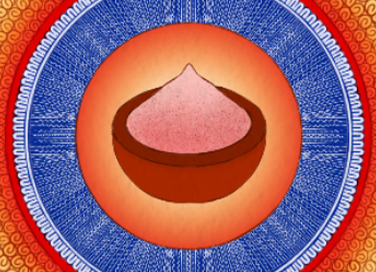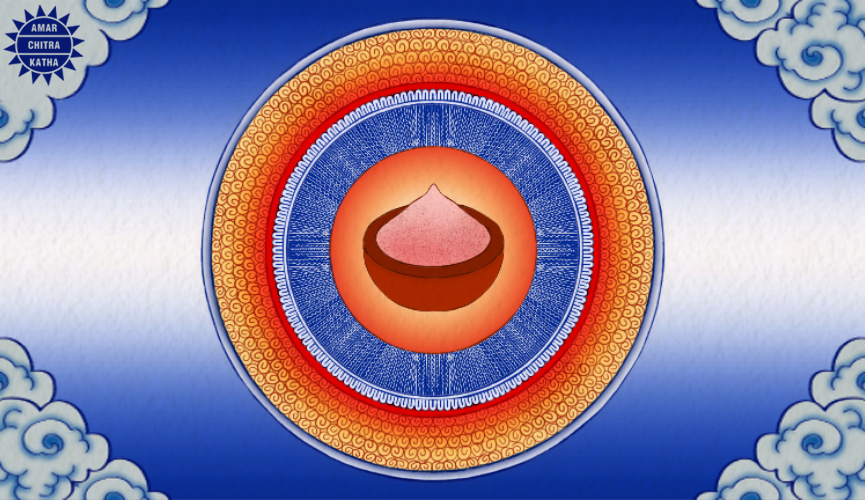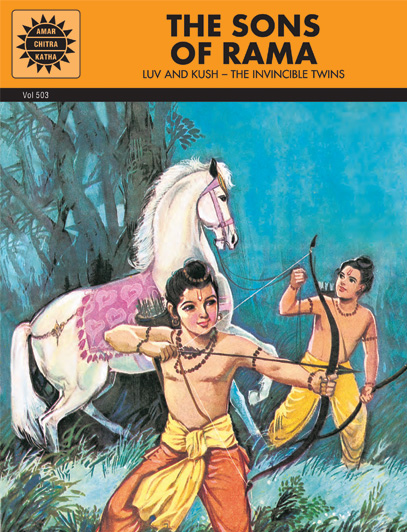Kala Namak: The Black Salt
- October 5, 2023


Kala Namak: The Black Salt
- October 5, 2023
By Shakthi Bharathi
According to Ayurveda, there are six tastes known as the ‘rasas’. Each rasa plays its own role in boosting health and influencing the taster’s mood. Thus, the perfect meal has to contain all six rasas: salty, sweet, pungent, sour, bitter, and astringent.
Salt, the first of these, has always been valuable in our country. The Tamil word ‘sambalam’, meaning wages, comes from samba (paddy) and alam (salt pans), as workers were paid in rice and salt. Salt is also a gauge of honour—derived from Urdu, the phrase ‘namak-haram’ refers to a traitor as someone who betrays the hand that has fed them.
To receive more such stories in your Inbox & WhatsApp, Please share your Email and Mobile number.

Illustration: Anjali Narendra
After the Dandi March, white salt conjures up the sounds of marching feet and the scent of sea breeze. But buried in the salt lakes of Rajasthan and the foothills of the Himalayas, lies a more colourful history. Kala Namak, a reddish-black rock salt, has been around for thousands of years. When finely powdered, it looks pink. Legend has it that Maharshi Charaka, the father of Ayurvedic medicine, documented its medicinal properties. According to him, Kala Namak is filled with minerals that aid digestion and enrich the body.
A sprinkle of Kala Namak is what gives chaat masala that distinct flavour. Its sulfuric smell, often likened to eggs, is also used to perk up vegan recipes.
To receive more such stories in your Inbox & WhatsApp, Please share your Email and Mobile number.

Comic of The Month
The Sons of Rama
The story of Rama and Sita was first set down by the sage Valmiki in his epic poem 'Ramayana.' Rama was the eldest son of Dasharatha, the king of Ayodhya, who had three wives - Kaushalya, Kaikeyi and Sumitra. Rama was the son of Kaushalya, Bharata of Kaikeyi and Laxmana and Shatrughna of Sumitra. The four princes grew up to be brave and valiant. Rama won the hand of Sita, the daughter of King Janaka. Dasharatha wanted to crown Rama as the king but Kaikeyi objected. Using boons granted to her by Dasharatha earlier, she had Rama banished to the forest. Sita and Laxmana decided to follow Rama. While in the forest, a Rakshasi, Shoorpanakha, accosted Laxmana but had her nose cut off by him. In revenge, her brother Ravana, king of Lanka, carried Sita away. Rama and Laxmana set out to look for her and with the help of an army of monkeys, defeated Ravana. On returning Ayodhya after fourteen years of exile, Rama banished Sita because of the suspicions of his subjects. In the ashrama of sage Valmiki, she gave birth to her twin sons, Luv and Kush.